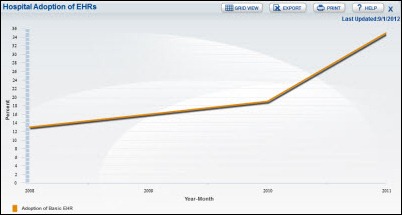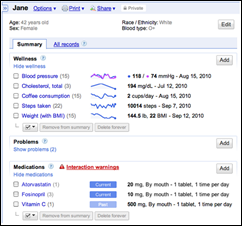EPtalk by Dr. Jayne 9/14/17
The Patient-Centered Outcomes Research Institute Board recently approved $97.9 million to support clinical effectiveness research. Eleven studies will compare different approaches to improving care for conditions that stress patients, caregivers, and the healthcare system. Issues addressed in the studies include opioid use for chronic pain, improvements to treatment of multiple sclerosis, and treatment for young sickle cell disease patients who are moving to adult care. They also approved $32.8 million for studies with pragmatic design; one for therapies to help patients with head and neck cancer swallow better; one to evaluate antiseptic skin washes used prior to orthopedic surgeries; and another that looks at effective prevention of dental cavities. Practical studies like this help to emphasize the need to continue spending research dollars to see how we can better improve health promotion, disease prevention, and the treatment of burdensome illnesses.
With all the intrigue around repealing the Affordable Care Act, I missed the fact that the Children’s Health Insurance Program (CHIP) must be reauthorized by Congress. CHIP covers nine million children from low- and middle-income households. Legislators are considering the duration for which they will reauthorize the program as well as whether other initiatives will be attached. There are a couple of other priorities Congress is grappling with, such as the debt ceiling, which also have to be addressed before the 30th. The last CHIP reauthorization was for two years and was passed months before the expiration date as part of a larger Medicare package. I’m all for ‘just in time’ delivery but this is cutting it close. Some states would run out of money as early as December, although others might have enough funds to get through the spring. Since many states already planned their budgets assuming the CHIP funding would be there, a loss of funding could trigger extensive cuts.
For those of you looking for your next gig, the FDA is accepting applications for its Digital Health Entrepreneur-in-Residence program aimed at supporting and developing the Software Precertification Pilot Program. The fellows will work with the FDA Digital Health Unit at least three days per week and will work to analyze software industry processes and key performance indicators to aid in predicting product quality. The goal is to look at the technology developer rather than at the finished product, as the FDA currently does for medical devices. Fellows will work with data modeling and will interact with stakeholders, pilot program participants, and internal FDA staff. Candidates must have at least five years of experience in software design, process improvement, metrics development, clinical trial design, post-market surveillance, or other related fields. During the six-month to two-year commitment, fellows will be based on the FDA White Oak campus in Silver Spring, MD. Applications will be open through September 29.
Patient engagement is a priority for many organizations, and CMS has announced a Medicare-Medicaid Coordination Office (MMCO) sponsored webinar titled “Involving and Supporting Family Care Givers in Care Planning and Delivery.” This is a timely topic for organizations looking to involve and empower the family members who are involved not only in assisting patients with activities of daily living but also in trying to manage multiple medical conditions, ensure medication compliance, watch for deterioration in patient status, and navigate the maze of healthcare. The webinar will also cover strategies for engaging families while respecting cultural diversity and will include geriatricians as well as a family caregiver. A close friend of mine just lost his spouse after a longstanding illness, and the stress on caregivers can be significant. Involving them in the care plan can help them focus on what they are able to do to improve quality of life for their loved ones rather than feeling helpless and alone, as my friend sometimes did while navigating the system on his wife’s behalf.
As a provider in flyover country, I didn’t know there was such a thing as the CMS Hurricane website; it’s got a lot of information about exceptions and exemptions for Medicare providers impacted by storms and flooding. Exceptions are being granted under quality reporting and value-based purchasing programs for hospitals, inpatient facilities, rehabilitation centers, home health agencies, hospices, and more. Exceptions are automatic based on location in a FEMA-declared major disaster county, without the entity having to submit an exception request. Additional options for impacted organizations include waver of hospitalization requirements prior to skilled nursing facility coverage if patients are evacuated, transferred, or relocated due to hurricanes; temporary expansion of bed counts at Critical Access Hospitals; waivers to permit replacement of lost or destroyed Durable Medical Equipment; and replacement prescription fills for covered Medicare Part B drugs. Other waivers are specified by state and entity. In addition to temporary relief from administrative burdens, CMS announced that US Public Health Service Commissioned Corps members have been deployed to affected areas, including physicians, nurses, and dieticians.
In other CMS news, a recent Proposed Rule would cancel two new bundled payment programs set to begin next year, and would overhaul the Comprehensive Care for Joint Replacement model that is currently mandatory in 67 geographic areas. It would become voluntary in 33 of those areas, underscoring a plan by CMS to boost participation in voluntary programs rather than requiring participation in episodic payment models. While CMS might be reducing burdens, other governmental entities are introducing new ones, namely a proposed House bill that would require e-prescribing of controlled substances under Medicare. The Every Prescription Conveyed Securely Act (HR 3528) is largely in response to the opioid crisis and would require e-prescribing for controlled drugs under Medicare Part D. Electronic prescribing of controlled substances is legal across the US now, with some states having their own additional controlled substances requirements. Although it specifies Part D requirements, it could push a lot more physicians to adopt the technology, as many will not want to have separate workflows for controlled and non-controlled drugs.
I had a couple of client engagements that were impacted by the hurricanes, so I’m about to head out on the road for a couple of weeks. None of my clients were in the areas of direct impact, but one did have some secondary flooding and a power outage. Fortunately, their failover systems worked as planned and their downtime procedures were in place, so the business was able to get up to speed as soon as the road to the office was accessible again. The recovery from these storms will be going on for months to years, so I know those who escaped with minimal impact are extremely grateful.

Email Dr. Jayne.
































































































"most people just go to Epic" that's a problem because then EPIC becomes a monopoly in healthcare, if it isn't…